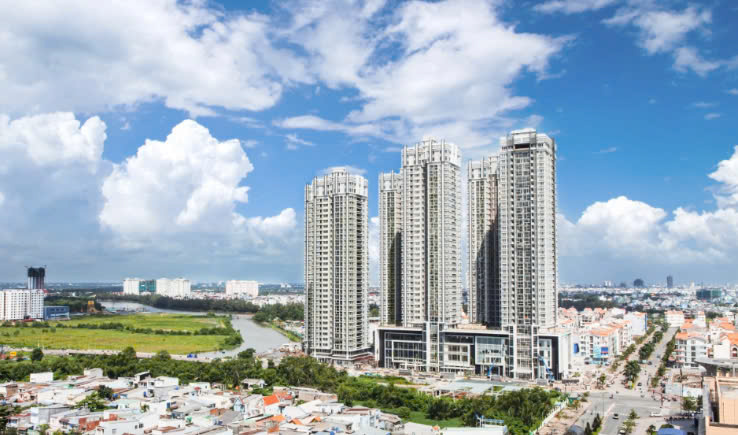In recent years, foreign direct investment (FDI) inflows into Vietnam have surged, contributing to a high demand for quality serviced apartments, particularly for foreign professionals. This segment has seen increases in both occupancy rates and rental prices.

According to data from the Foreign Investment Agency under the Ministry of Planning and Investment, as of July 20, 2024, the total registered FDI in Vietnam exceeded 18 billion USD, marking a 10.9% increase compared to the same period last year. Meanwhile, disbursed capital reached over 12.55 billion USD, an increase of 8.4% compared to the same period in 2023.
In the first seven months of 2024, both registered and implemented capital recorded significant growth. New registered capital amounted to 10.76 billion USD, up 35.6% from the same period in 2023, with the number of new projects reaching 1,816, an 11.6% increase, and the average investment size per project at 5.9 million USD, higher than the 4.9 million USD recorded in the previous year.
Mr. Troy Griffiths, Deputy Managing Director of Savills Vietnam, stated that FDI into Vietnam has been robust over the past 3-4 years, with notable shifts in trends. Previously, Vietnam attracted FDI due to competitive cost advantages; however, FDI is now shifting towards areas such as data center rental services and supply chain optimization, particularly in the electronics sector. This trend has brought a large number of foreign professionals to work in Vietnam, further increasing the demand for serviced apartments.
According to Savills Vietnam, in Hanoi, the serviced apartment market mainly focuses on the A and B segments, with demand expanding into neighboring provinces such as Bac Ninh, Hung Yen, and Hai Duong due to improved infrastructure connectivity. In Ho Chi Minh City, the demand for serviced apartments is more diverse, with the emergence of a C segment. The tenant group mainly consists of foreign professionals from various industries, creating a rich variety of demands.
Savills Vietnam also noted that even during challenging periods like the COVID-19 pandemic, the serviced apartment market remained active. In Hanoi, prices and occupancy rates were not significantly affected, while in Ho Chi Minh City, there was a slight decrease, but the market rebounded quickly.
However, Savills also pointed out that the serviced apartment segment faces fierce competition from rental apartment projects. Statistics show that in the last three years, over 40,000 rental apartments have been added to the market. The primary tenants of serviced apartments are foreign professionals working in industrial zones and large enterprises in Ho Chi Minh City, Long An, Dong Nai, and Binh Duong. To optimize occupancy rates, many projects have combined long-term and short-term rentals.
According to Savills, serviced apartments in the B and C segments in Ho Chi Minh City recorded 1,849 units from 48 new projects over the past five years. Developers are currently focusing on developing studio and one-bedroom apartments, with 85% of the new supply falling into these categories to meet the demand for affordable housing.
The Q2 2024 market report from Savills indicated that the supply of serviced apartments in Ho Chi Minh City reached 8,490 units, a 21% increase year-on-year. It is projected that by 2025, only 500 additional units from five new projects will enter the market, with 63% located in District 1.
The occupancy rate of serviced apartments in Ho Chi Minh City stood at 79%, a slight decrease of 1% quarter-on-quarter and 4% year-on-year due to lower demand for short-term stays during the off-peak season. The average rental price was 513,000 VND/m²/month, increasing by 1% compared to the previous quarter and remaining stable year-on-year. Projects in the A and B segments achieved at least 80% occupancy, with 9 out of 14 projects recording an average rental price increase of 3% compared to the previous quarter.
Hotline
Hotline